 Early Literacy Aside--Explain: Researchers have noted one of the areas of early literacy to be print motivation. This means having an interest in and enjoying books. Children are more likely to have print otivation when they are involved with the story. As I share books today, you'll see different ways you can keep your children interested as you read with them.Read Down by the Cool of the Pool
Early Literacy Aside--Example: Having a child say a repeated phrase with you throughout the book keeps him involved and it's an easy way to you to support print motivation.
Early Literacy Aside--Empower: Remember that promoting literacy does not mean creating a school-like setting in your home, but rather taking advantage of the opportunities in your everyday life.
Submitted by Emily Little, Public Library of Charlotte and Mechlenburg County (NC)
Early Literacy Aside--Explain: Researchers have noted one of the areas of early literacy to be print motivation. This means having an interest in and enjoying books. Children are more likely to have print otivation when they are involved with the story. As I share books today, you'll see different ways you can keep your children interested as you read with them.Read Down by the Cool of the Pool
Early Literacy Aside--Example: Having a child say a repeated phrase with you throughout the book keeps him involved and it's an easy way to you to support print motivation.
Early Literacy Aside--Empower: Remember that promoting literacy does not mean creating a school-like setting in your home, but rather taking advantage of the opportunities in your everyday life.
Submitted by Emily Little, Public Library of Charlotte and Mechlenburg County (NC)
Mama Cat Has Three Kittens by Denise Fleming
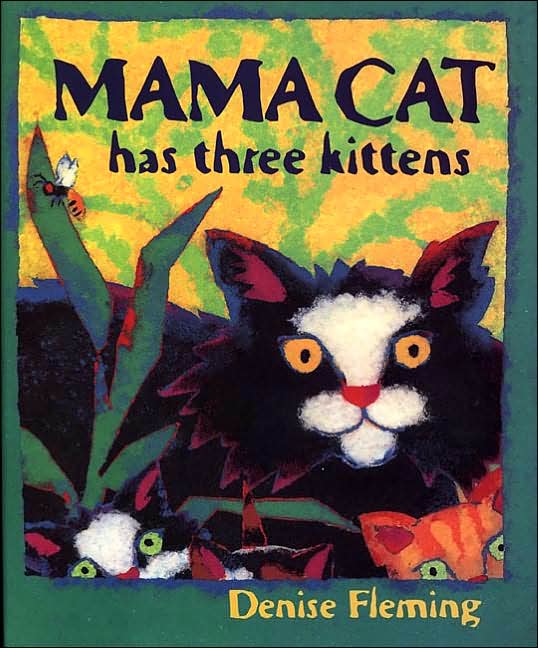 Cat Puppet: There's a cat in my hat, a cat in my hat, a cat in my hat today (do twice). What does the kitty cat say? [cat puppet says meow]Read Mama Cat Has Three Kittens
Early Literacy Aside--Example: When children hear rhymes, rhythms and sounds of animals, it helps them develop phonological awareness, hearing the smaller sounds in words. This is a skill that will help them as they begin to read.
Early Literacy Aside--Empower: Keep doing rhymes with things in your children's world. Today we did cat in my hat. You can do ball in the hall or star on my car (give a star sticker).
Cat Puppet: There's a cat in my hat, a cat in my hat, a cat in my hat today (do twice). What does the kitty cat say? [cat puppet says meow]Read Mama Cat Has Three Kittens
Early Literacy Aside--Example: When children hear rhymes, rhythms and sounds of animals, it helps them develop phonological awareness, hearing the smaller sounds in words. This is a skill that will help them as they begin to read.
Early Literacy Aside--Empower: Keep doing rhymes with things in your children's world. Today we did cat in my hat. You can do ball in the hall or star on my car (give a star sticker).
Submitted by Cathy Cartedge, Public Library of Charlotte and Mechlenburg County (NC)
Swim, Little Wombat, Swim by Charles Fuge
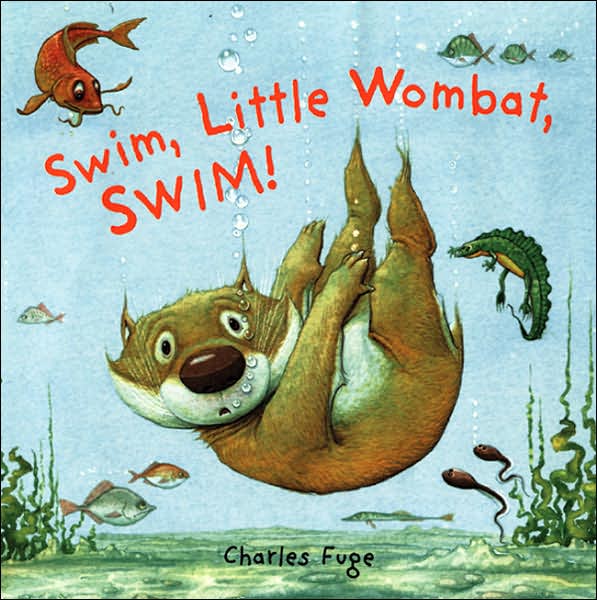
Submitted by Larisa Martin, Public Library of Charlotte and Mechlenburg County (NC)
Three Bears by Byron Barton
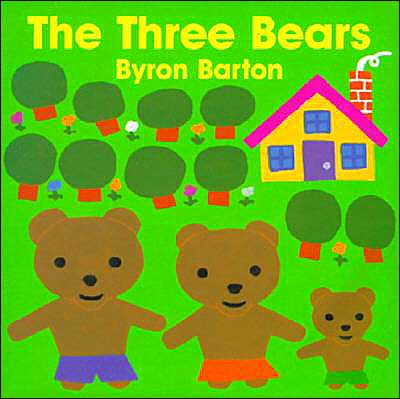 Early Literacy Aside--Explain: Narrative skills is the ability to talk about events and tell stories. Having children tell you what they are thinking, talk about things that happen, or tell you stories is later going to help them understand what they read.Read The Three Bears and have children help you retell the story using props or a flannel board.
Early Literacy Aside--Example: Retelling stories helps children understand what they read. Using props found around home can help children remember and retell stories.
Early Literacy Aside--Empower: When children do what is called dramatic play, when they act out stories, this kind of play helps children understand the structure and story and helps them understand the story itself. Play is a great way to support later reading.
Early Literacy Aside--Explain: Narrative skills is the ability to talk about events and tell stories. Having children tell you what they are thinking, talk about things that happen, or tell you stories is later going to help them understand what they read.Read The Three Bears and have children help you retell the story using props or a flannel board.
Early Literacy Aside--Example: Retelling stories helps children understand what they read. Using props found around home can help children remember and retell stories.
Early Literacy Aside--Empower: When children do what is called dramatic play, when they act out stories, this kind of play helps children understand the structure and story and helps them understand the story itself. Play is a great way to support later reading.
Submitted by Sue Smith, Independence Library, Public Library of Charlotte and Mechlenburg County (NC)
Shape Bee

Early Literacy Aside--Example: Before children learn letters, they learn shapes. Let them play with shapes to develop later letter knowledge. Flannel Board: Do Shape Bee on flannel board. See attachment for pattern Shape Bee pattern Craft Activity: You can use the pattern as a basis to have the children make their own Shape Bee. Early Literacy Aside--Empower: Wherever you go today, look for the letter B, on signs, in books, on products. Then you can do the same with other letters throughout the week.
Submitted by Erin Nguyen, Public Library of Charlotte and Mechlenburg County (NC)
Itsy Bitsy Spider Rhyme
 Early Literacy Aside--Explain: Talking with children as you read books and share rhymes can add to the words they know and to their knowledge if YOU use words they are not familiar with or add information they may not yet know. Both adding to their vocabulary and to their knowledge will help them understand what they read when they learn to read. Say/sing the rhyme with actions:
The itsy bitsy spider went up the waterspout.
Down came the rain and washed the spider out.
Out came the sun and dried up all the rain.
And the itsy bitsy spider climbed up the spout again.
Early Literacy Aside--Example: Here are some examples of the kinds of questions you can ask your children. Then add to what they say to introduce new words and information. [Then you ask the children a couple of questions. Some possibilities are below. Be careful to keep it fun and engaging, not like a test of knowledge.]
Where was the spider going?
What happened when the rain started?
Where do you think spiders live?
Have you seen a spider? Where? What was it doing?
What do you know about spiders?
Early Literacy Aside--Empower: Sometimes we do not know much about some of the topics our children are interested in. We have lots of factual books on a variety of topics like spiders, snakes, dinosaurs, trains, and more. Just let us know what you and your children would like to read about. These books not only make reading enjoyable because yuou are building on your child's interest, you are also setting a good foundation for helping them learn new words and knowledge.
Early Literacy Aside--Explain: Talking with children as you read books and share rhymes can add to the words they know and to their knowledge if YOU use words they are not familiar with or add information they may not yet know. Both adding to their vocabulary and to their knowledge will help them understand what they read when they learn to read. Say/sing the rhyme with actions:
The itsy bitsy spider went up the waterspout.
Down came the rain and washed the spider out.
Out came the sun and dried up all the rain.
And the itsy bitsy spider climbed up the spout again.
Early Literacy Aside--Example: Here are some examples of the kinds of questions you can ask your children. Then add to what they say to introduce new words and information. [Then you ask the children a couple of questions. Some possibilities are below. Be careful to keep it fun and engaging, not like a test of knowledge.]
Where was the spider going?
What happened when the rain started?
Where do you think spiders live?
Have you seen a spider? Where? What was it doing?
What do you know about spiders?
Early Literacy Aside--Empower: Sometimes we do not know much about some of the topics our children are interested in. We have lots of factual books on a variety of topics like spiders, snakes, dinosaurs, trains, and more. Just let us know what you and your children would like to read about. These books not only make reading enjoyable because yuou are building on your child's interest, you are also setting a good foundation for helping them learn new words and knowledge.
Submitted by a library staff person at Public Library of Charlotte and Mechlenburg County (NC)
Catch That Goat by Polly Alakija
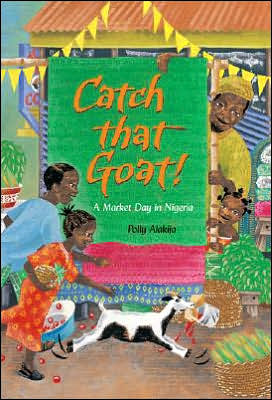 Early Literacy Aside--Explain: Today we're going to highlight narrative skills. This is the ability to describe things and to talk about events and tell stories. Researchers have noted this skill as one of the early literacy skills that will help your child be ready to read. It helps children understand what they will read.Read Clay Boy by Mirra Ginsburg
Flannel Board of Three Billy Goats Gruff
Early Literacy Aside--Example: In Catch That Goat we're going to say part of the story together. Acting out or repeating parts of stories helps children internalize and understand what is happening in the story. This will help them tell the story back to you, especially with their favorite stories which they like to hear over and over again. OK, now, let's all say together, "Have you seen my goat?" and "No!" Great!
Read Catch That Goat
Song: "Spaghetti Legs" on Jim Gill Sings the Sneezing Song and Other Contagious Tunes
Rhyme: 1, 2, 3, 4, 5 Once I Caught a Fish Alive
Read Oh, Look by Patricia Polacco
Early Literacy Aside--Empower: Today we read some of my favorite stories. Practice telling and retelling stories. If you let your child watch television, talk about the shows you watch together. Have them tell you what happened in the show. This will help them talk aout what is happening in books also. Talking about what they know and retelling events and stories helps them understand what is being read.
Early Literacy Aside--Explain: Today we're going to highlight narrative skills. This is the ability to describe things and to talk about events and tell stories. Researchers have noted this skill as one of the early literacy skills that will help your child be ready to read. It helps children understand what they will read.Read Clay Boy by Mirra Ginsburg
Flannel Board of Three Billy Goats Gruff
Early Literacy Aside--Example: In Catch That Goat we're going to say part of the story together. Acting out or repeating parts of stories helps children internalize and understand what is happening in the story. This will help them tell the story back to you, especially with their favorite stories which they like to hear over and over again. OK, now, let's all say together, "Have you seen my goat?" and "No!" Great!
Read Catch That Goat
Song: "Spaghetti Legs" on Jim Gill Sings the Sneezing Song and Other Contagious Tunes
Rhyme: 1, 2, 3, 4, 5 Once I Caught a Fish Alive
Read Oh, Look by Patricia Polacco
Early Literacy Aside--Empower: Today we read some of my favorite stories. Practice telling and retelling stories. If you let your child watch television, talk about the shows you watch together. Have them tell you what happened in the show. This will help them talk aout what is happening in books also. Talking about what they know and retelling events and stories helps them understand what is being read.
Submitted by Vera Beers, Public Library of Charlotte and Mechlenburg County (NC)
Train Song by Harriet Ziefert
 Early Literacy Aside--Explain: Researchers have found that one of ways you can support later reading is by helping children hear the smaller sounds in words. This skill is called phonological awareness. Today I'll point out some thing you can do to help your childrne develop this skill.Early Literacy Aside--Example: Rhyming is one way that children learn to hear that words are made up of smaller parts. By doing rhymes with your children you are setting the stage for them to sound out words to read.
Read Train Song
Early Literacy Aside--Empower: Find a book at home which has rhyming words and see if your child can identify words that rhyme. If you don't have a rhyming book, just read a book and then pick a word and think of rhyming words together.
Early Literacy Aside--Explain: Researchers have found that one of ways you can support later reading is by helping children hear the smaller sounds in words. This skill is called phonological awareness. Today I'll point out some thing you can do to help your childrne develop this skill.Early Literacy Aside--Example: Rhyming is one way that children learn to hear that words are made up of smaller parts. By doing rhymes with your children you are setting the stage for them to sound out words to read.
Read Train Song
Early Literacy Aside--Empower: Find a book at home which has rhyming words and see if your child can identify words that rhyme. If you don't have a rhyming book, just read a book and then pick a word and think of rhyming words together.
Submitted by Rita Doran, Dayton Metro (OH) Public Library
Old Macdonald Had a Farm Flannel Board
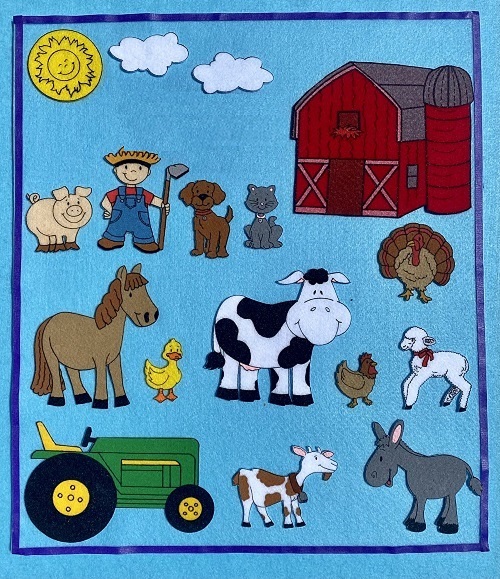 Pass out flannel board pieces of fam animals. Play or sing "Old Macdonald Had a Farm" . When a child hears the animal he/she is holding, that child comes up to place the animal piece on the flannel board.Early Literacy Aside--Example: Having your children hear and make the sounds of the animals is one enjoyable way to help them develop phonological awareness, to eventually be able to hear the smaller sounds in words.
Take-Home Activity: Hand out shapes of animals for families to take home.
Early Literacy Aside--Empower: Parents, you can use these animal shapes to make animal sounds with your children and home and sing the song with them to practice the skill of phonological awareness.
Pass out flannel board pieces of fam animals. Play or sing "Old Macdonald Had a Farm" . When a child hears the animal he/she is holding, that child comes up to place the animal piece on the flannel board.Early Literacy Aside--Example: Having your children hear and make the sounds of the animals is one enjoyable way to help them develop phonological awareness, to eventually be able to hear the smaller sounds in words.
Take-Home Activity: Hand out shapes of animals for families to take home.
Early Literacy Aside--Empower: Parents, you can use these animal shapes to make animal sounds with your children and home and sing the song with them to practice the skill of phonological awareness.
Submitted by Helen Patzer, Dayton (OH) Metro Library, Northtown-Shiloh Branch.
Print Motivation
Early Literacy Aside--Explain: Our Early Literacy Tip of the Day is on print motivation or showing children how to love books. You know that kids love to read the same book over and over. This is how children learn, so go ahead and read Dora the Explorer or their favorite book one more time. Your kids will love you for it.Early Literacy Aside--Empower: As you leave, please pick up a book from the table and read it with your child. If for some reason your child is not interested, don't force it on her. Find something she is interested in or wait until your child is ready to listen. It's OK to not finish a book! Don't make it a chore that needs to be done.
Submitted by Kim Connett, Marion (OH) Public Library
Mouse Mess by Linnea Riley
 Early Literacy Aside--Explain: We are going to have fun playing with sounds today, reading stories with sound words. Playing with sounds helps develop phonological awareness which will help your child learn to hear the smaller sounds in words.Read book emphasizing sound words like crunch and munch. Then I go back to some pages and have the children say the words with me, again emphasizing different sounds.
Early Literacy Aside--Example: Hearing and learning sound words like splish-splash is an enjoyable way of learning phonlogical awareness and will help your children later hear smaller sounds in words.
Early Literacy Aside--Empower: At home, play with sound words, like splish-splash in the bath, crunch-munch at snack, and exaggerate how you are saying words to practice hearing their parts.
Early Literacy Aside--Explain: We are going to have fun playing with sounds today, reading stories with sound words. Playing with sounds helps develop phonological awareness which will help your child learn to hear the smaller sounds in words.Read book emphasizing sound words like crunch and munch. Then I go back to some pages and have the children say the words with me, again emphasizing different sounds.
Early Literacy Aside--Example: Hearing and learning sound words like splish-splash is an enjoyable way of learning phonlogical awareness and will help your children later hear smaller sounds in words.
Early Literacy Aside--Empower: At home, play with sound words, like splish-splash in the bath, crunch-munch at snack, and exaggerate how you are saying words to practice hearing their parts.
Submitted by Carrie Burrier, Akron-Summit County (OH) Public Library
Bop 'Til You Drop Song by Mr. Al
 Early Literacy Aside--Explain: Research shows that there are early literacy skills that influence a child's ability to learn to read. Today, you will probably notice several places where I demonstrate examples of narrative skills, which is the ability to describe things and events and to tell stories. When you develop this skill, it will help your children understand what they reads later.Song: Bop 'Til You Drop
Go through the sequence of motions that are in the song, Bop 'Til You Drop
Early Literacy Aside--Example: Singing songs that have a certain order is one great way for children to remember the sequence or order of things. They will use the same skill when they retell a story. They learn how stories work.
Early Literacy Aside--Empower: One thing that you can do at home to develop narrative skills is to describe regular activities such as taking a bath--"first we'll get out the towel, then we'll put the water in the tub and add the bubbles/toys, then we'll take off your clothes, and get in the water. We can scrub our toes, our ears . . . " With older kids, let THEM describe the sequence of events with prompts like, "What do we have to do before we put the bubbles in? or "What do we do next?"
Early Literacy Aside--Explain: Research shows that there are early literacy skills that influence a child's ability to learn to read. Today, you will probably notice several places where I demonstrate examples of narrative skills, which is the ability to describe things and events and to tell stories. When you develop this skill, it will help your children understand what they reads later.Song: Bop 'Til You Drop
Go through the sequence of motions that are in the song, Bop 'Til You Drop
Early Literacy Aside--Example: Singing songs that have a certain order is one great way for children to remember the sequence or order of things. They will use the same skill when they retell a story. They learn how stories work.
Early Literacy Aside--Empower: One thing that you can do at home to develop narrative skills is to describe regular activities such as taking a bath--"first we'll get out the towel, then we'll put the water in the tub and add the bubbles/toys, then we'll take off your clothes, and get in the water. We can scrub our toes, our ears . . . " With older kids, let THEM describe the sequence of events with prompts like, "What do we have to do before we put the bubbles in? or "What do we do next?"
Little Raindrops Fingerplay
Fingerplay: Little Raindrops
This is the sun, high up in the sky. (Form large circle with arms up)
A dark cloud suddenly comes sailing by. (Move hands through the air in a parallel motion.)
These are the raindrops, pitter, pattering down. (Bring arms down, flutter fingers)
Watering the flowers, growing on the ground. (Cup hands to form flowers.)
Activity: Make a book based on this fingerplay. Use the pattern here (Little Raindrops Booklet pattern) to represent the items in the fingerplay. There are four pages for your book (one for each line of the fingerplay). The pattern is a Word document so you can change the size of the objects to save paper, if you wish. The children cut out the pictures. They can cut around them to make it easier. The adults write the words to the fingerplay on each page. For children too young for this craft, the adults make the book FOR their young children. The umbrella can be used on the cover of the book.
Early Literacy Aside--Empower: Making a book with or for your child is very special. By showing care in making them and including your child in the process you make this activity around a book enjoyable. Your child can memorize the words to the rhyme and can "pretend" read it to you. Praise your child. This helps develop print motivation, a child's interest and enjoyment of books and reading. OR Making a book with your child shows them how books work. This helps them with print awareness, how to handle a book, which will get them comfortable with using books as they learn to read. Submitted by Jaime Duval and Whitney Whitaker, Radford (VA) Public Library
Mouse Mess by Linnea Riley
 Book Introduction: Our next story is Mouse Mess by Linnea Riley. Notice the words on boxes and bottles as Mouse finds food to eat.
Read the book, saying the words on the boxes and bottles as you point to them.
Early Literacy Aside--Example: Pointing out the words we see on boxes and bottles is one way to help children develop one of the early literacy skills, print awareness, understanding that print has meaning.
Activity: At the end of storytime put out cereal boxes, bottles, any containers with writing on it and let the children "read" them.
Early Literacy Aside--Empower: Don't forget, when you go shopping or are just out and about, talk with your children about the signs and labels they see, just as we did with Mouse Mess. This is one simple way to develop your children's print awareness.
Book Introduction: Our next story is Mouse Mess by Linnea Riley. Notice the words on boxes and bottles as Mouse finds food to eat.
Read the book, saying the words on the boxes and bottles as you point to them.
Early Literacy Aside--Example: Pointing out the words we see on boxes and bottles is one way to help children develop one of the early literacy skills, print awareness, understanding that print has meaning.
Activity: At the end of storytime put out cereal boxes, bottles, any containers with writing on it and let the children "read" them.
Early Literacy Aside--Empower: Don't forget, when you go shopping or are just out and about, talk with your children about the signs and labels they see, just as we did with Mouse Mess. This is one simple way to develop your children's print awareness.
The Art Box by Gail Gibbons
 Before reading the book: Ask the children to describe things they would put in a box. And in this box it will contain art supplies. What can you think of? They reply with crayons, paint, etc. This is a great way for children to use the vocabulary that they do know and also good for developing Narrative Skills, which is the ability to describe events and tell stories. Now let's see how a book can help introduce children to new vocabulary.Read the book Art Box by Gail Gibbons.
Have items like compass, protractor, etc. available for the children to see and use. Talk about what they do.
Early Literacy Aside--Empower: Parents, having real objects to help children understand words in the book is one way to help build their vocabulary, to learn the meanings of words. Even when you are not reading books, just talking about objects around the house and what they do is one way to expand children's understanding.
Before reading the book: Ask the children to describe things they would put in a box. And in this box it will contain art supplies. What can you think of? They reply with crayons, paint, etc. This is a great way for children to use the vocabulary that they do know and also good for developing Narrative Skills, which is the ability to describe events and tell stories. Now let's see how a book can help introduce children to new vocabulary.Read the book Art Box by Gail Gibbons.
Have items like compass, protractor, etc. available for the children to see and use. Talk about what they do.
Early Literacy Aside--Empower: Parents, having real objects to help children understand words in the book is one way to help build their vocabulary, to learn the meanings of words. Even when you are not reading books, just talking about objects around the house and what they do is one way to expand children's understanding.
Submitted by Katie Ross, Kanawha County (WV) Public Library System
Buzz, Buzz, Buzz! Went Bumblebee by Colin West
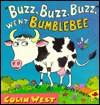 Early Literacy Aside--Explain: Narrative skills can be developed by having your children tell stories. This is easier for some children when they recognize patterns so that they can predict what will happen next.Early Literacy Aside--Example: As we read the book we want to encourage our children to recognize the pattern and to repeat "buzz, buzz, buzz" and "buzz off."
Read Buzz, Buzz, Buzz! Went Bumble-bee by Colin West
Fingerplay: Here is the Beehive
Here is the beehive. Where are the bees? (Hold up fist.)
Hidden away where nobody sees. (Move other hand around fist.)
Watch and you see them come out of the hive. (Bend head close to fist.)
One, two, three, four, five. (Hold fingers up one at a time.)
Bzzzzzzzz all fly away! (Wave fingers.)
Early Literacy Aside--Empower: Children enjoy repeating phrases as they did in our book and song. Please help your children look for patterns in the books and songs you do at home. This helps foster your children's narrative skills which will later help them understand how stories work and will help them understand what they read.
Early Literacy Aside--Explain: Narrative skills can be developed by having your children tell stories. This is easier for some children when they recognize patterns so that they can predict what will happen next.Early Literacy Aside--Example: As we read the book we want to encourage our children to recognize the pattern and to repeat "buzz, buzz, buzz" and "buzz off."
Read Buzz, Buzz, Buzz! Went Bumble-bee by Colin West
Fingerplay: Here is the Beehive
Here is the beehive. Where are the bees? (Hold up fist.)
Hidden away where nobody sees. (Move other hand around fist.)
Watch and you see them come out of the hive. (Bend head close to fist.)
One, two, three, four, five. (Hold fingers up one at a time.)
Bzzzzzzzz all fly away! (Wave fingers.)
Early Literacy Aside--Empower: Children enjoy repeating phrases as they did in our book and song. Please help your children look for patterns in the books and songs you do at home. This helps foster your children's narrative skills which will later help them understand how stories work and will help them understand what they read.
Who's There on Halloween? by Pamela Beall

Song: Do a rhyming song to the tune of Are You Sleeping? We are rhyming; we are rhyming. Rhyme with me; rhyme with me. Nose rhymes with toes; nose rhymes with toes. (substitute other words from story) Rhyme with me; rhyme with me. Early Literacy Aside--Empower: Take advantage of lots of opportunities to play rhyming games with your children. Simple activities like this will help your child be able to sound out words when they learn to read.
Submitted by participants in Saskatchewan Library Association Conference
Dog Blue by Polly Dunbar
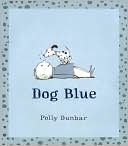
Submitted by participants of Saskatchewan Library Association Conference
Eat Your Peas by Kes Gray
Click below for a storytime plan including the book Eat Your Peas by Kes Gray and highlighting print motivation.
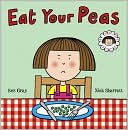
peaspeaspeas1.doc Submitted by participants of Saskatchewan Library Association Conference 2008
How To Be a Good Dog by Gail Page
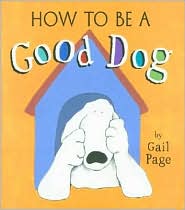
Submitted by Saskatchewan Library Association conference participants
